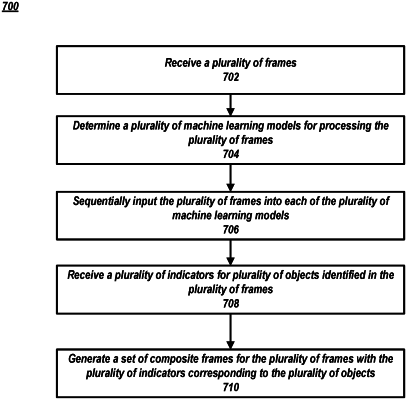| CPC G06V 10/96 (2022.01) [G05B 13/0265 (2013.01); G06V 10/764 (2022.01); G06V 10/87 (2022.01); G06V 10/955 (2022.01); G06V 20/56 (2022.01)] | 20 Claims |

|
1. A system for generating composite images that include object identifiers determined based on processing source images through multiple machine learning models, the system comprising:
one or more processors; and
a non-transitory computer-readable storage medium storing instructions, which when executed by the one or more processors cause the one or more processors to perform operations comprising:
receiving a plurality of images from a recording device;
determining a plurality of object types to be recognized in the plurality of images;
determining, based on the plurality of object types, a plurality of machine learning models for processing the plurality of images, wherein each machine learning model identifies an object type different from object types identified by another machine learning model in the plurality of machine learning models;
inputting a first image into each of the plurality of machine learning models;
receiving output from a first machine learning model of the plurality of machine learning models;
determining that a subset of images of the plurality of images has been input into a second machine learning model of the plurality of machine learning models;
inputting a last image of the subset of images into the first machine learning model while refraining from inputting other images of the subset of images into the first machine learning model;
receiving from each machine learning model one or more indicators indicating, in the plurality of images, one or more objects identified in a corresponding images of the plurality of images;
generating a set of composite images for the plurality of images with the one or more indicators from each machine learning model; and
generating an output video stream comprising the set of composite images to be displayed in chronological order.
|